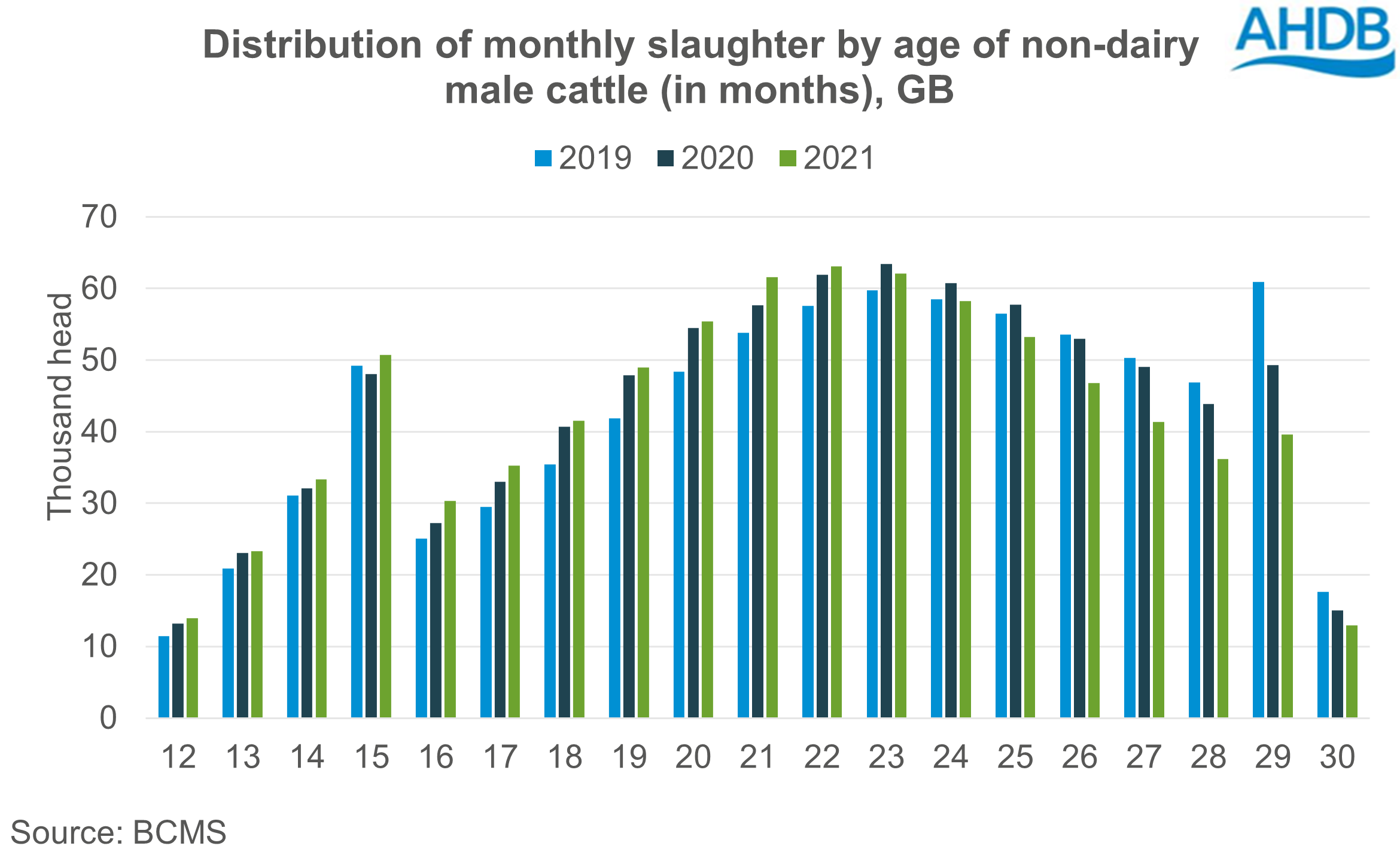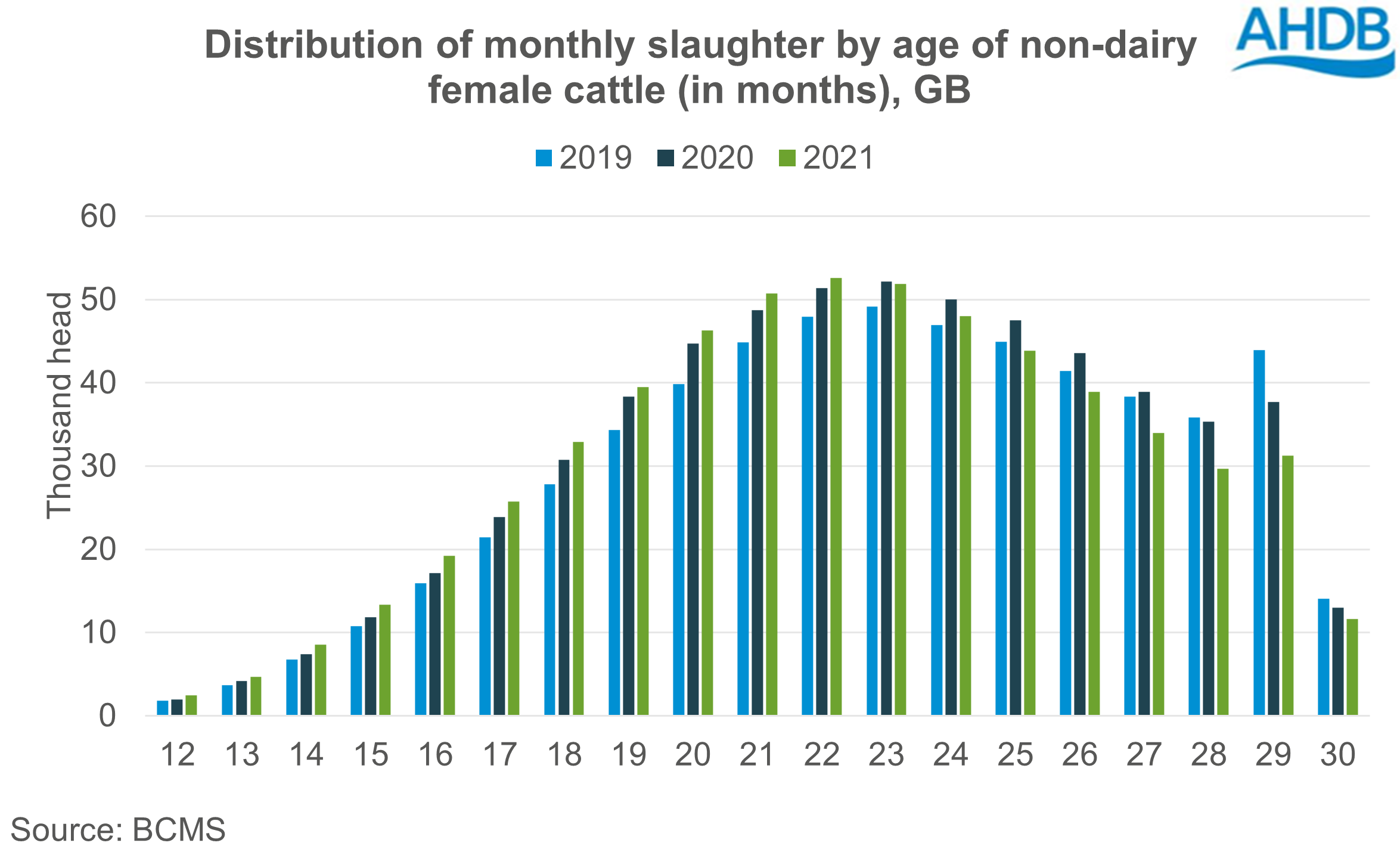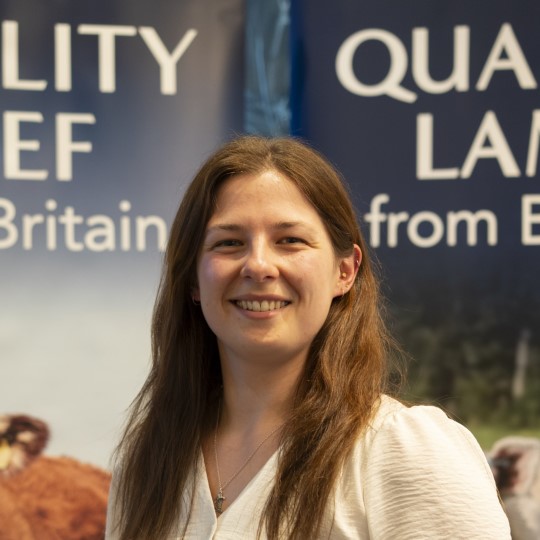Age at slaughter trends in GB cattle
Friday, 2 December 2022
Age at slaughter is an important factor in cattle finishing enterprises. Not only does it contribute to the profitability of a system, it’s also a key metric in carbon footprinting. But, how do average ages compare? Data from the British Cattle Movement Service (BCMS) allows us to understand headline trends.
Trends in beef cattle
Looking at the distribution of slaughterings by age, BCMS data shows us that for beef males aged 12-30 months, slaughter numbers generally increase to a peak of around 22-23 months old. Numbers then decline beyond this age, but tick up again at 29 months, although this trend has softened over recent years (some of this will be to do with total supplies available as well as age trends). The uptick at 29 months potentially reflects producers wishing to avoid abattoir penalties for animals aged over 30 months.

There is also a notable spike in slaughter numbers at 15 months old. This group is most likely occupied by more intensively finished young bulls, but some systems will finish steers at these ages (it is not possible to split out steers and young bulls in the data).

For female beef cattle, the story is similar. Numbers steadily rise to a peak at around 22-23 months old, fall through the older ages and rise again at 29 months. The key difference in age profile when compared to males is the absence of a spike at 15 months.
What affects age at slaughter?
Slaughter age varies by cattle type, sex, breed, and finishing system. It is also influenced by buyer requirements, such as abattoir specifications. Policy and technological changes within industry can also play a role. Our international benchmarking work also shows how this varies by country.

Sign up for regular updates
You can subscribe to receive Beef and Lamb market news straight to your inbox. Simply fill in your contact details on our online form.
While AHDB seeks to ensure that the information contained on this webpage is accurate at the time of publication, no warranty is given in respect of the information and data provided. You are responsible for how you use the information. To the maximum extent permitted by law, AHDB accepts no liability for loss, damage or injury howsoever caused or suffered (including that caused by negligence) directly or indirectly in relation to the information or data provided in this publication.
All intellectual property rights in the information and data on this webpage belong to or are licensed by AHDB. You are authorised to use such information for your internal business purposes only and you must not provide this information to any other third parties, including further publication of the information, or for commercial gain in any way whatsoever without the prior written permission of AHDB for each third party disclosure, publication or commercial arrangement. For more information, please see our Terms of Use and Privacy Notice or contact the Director of Corporate Affairs at info@ahdb.org.uk © Agriculture and Horticulture Development Board. All rights reserved.

